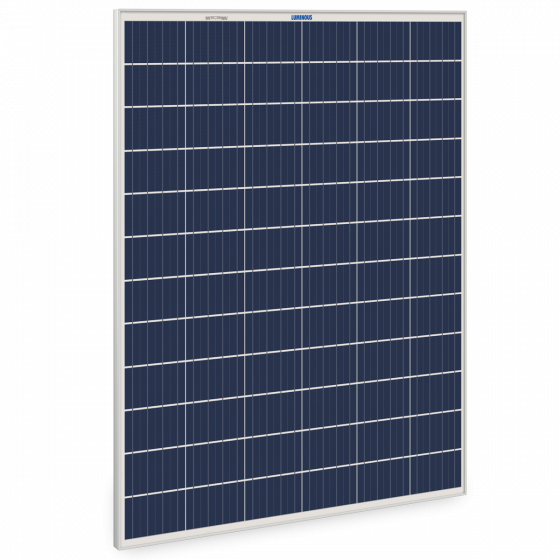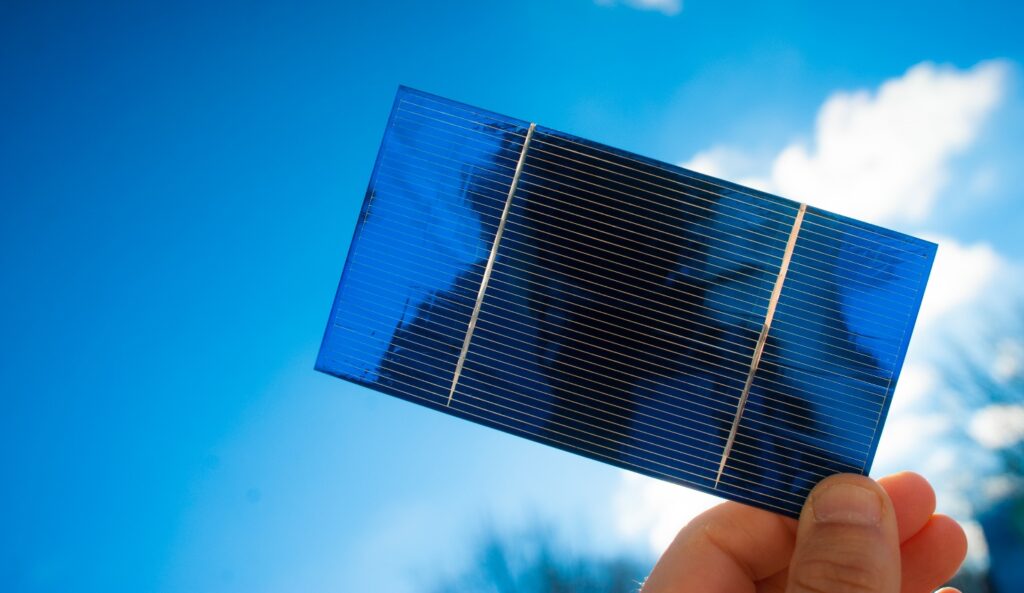The percentage of solar energy shining on a photovoltaic (PV) device that is transformed into useable electricity is known as the conversion efficiency of a PV device. Solar cell efficiency doesn’t always turn 100% of the sunshine into power. Most of it is actually gone. The solar panel design elements decide how much sunlight can be converted into electricity.

Solar Cell Efficiency can be attained by designing with these aspects in mind.
1. Wavelengths:
Light is composed of photons or packets of energy with varying wavelengths and energies. The sunlight that reaches the planet’s surface has wavelengths ranging from ultraviolet to infrared. When light strikes the surface of a solar cell, some photons are reflected, and others flow right through. Some of the absorbed photons’ energy is converted to heat. The remaining particles have sufficient energy to break atomic bonds and liberate electrons, so producing charge carriers and electric current.
2. Recombination:
For an electric current to flow through a semiconductor, a “charge carrier”, such as a negatively charged electron, must traverse the material. Another sort of charge carrier is a “hole,” which represents the lack of an electron in a substance and works as a positive charge carrier. When an electron collides with a hole, it may recombine, cancelling out its contributions to the electrical current.
Direct recombination reverses the process of energy production in a solar cell. In this process, the electrons and holes created by light collide, recombine, and emit a photon. It is one of the primary obstacles to productivity.
Indirect recombination is the process that occurs when electrons or holes come into touch with an impurity, a fault in the crystal structure, or an interface. This permits the energy to be converted into heat.
3. Temperature:
Solar cells perform well at low temperatures. As a result of the changing semiconductor properties brought on by higher temperatures, a small rise in current is generated but a significantly bigger fall in voltage. Extreme temperature rises can also damage the materials in the cell and other modules, shortening their useful lives. Most of the light that hits a plant’s cells is turned into heat, so a plant’s ability to deal with the heat is important for its productivity and longevity.
4. Reflection:
The performance of a cell can be improved by reducing the amount of light that bounces off its surface. Untreated silicon, for example, reflects more than 30% of the light that strikes it. Anti-reflection coatings and textured surfaces diminish reflection. A cell with high solar cell efficiency will be dark blue or black.
How Does it Contribute to the Solar Panel Efficiency?
Simply said, photovoltaics, the process by which solar energy is transformed into electricity, underlies solar cell efficiency. An effective solar panel uses less area while producing more electricity. Science informs us that there is no possibility of creating a system with 100% efficiency because technology is still in the process of evolving in that direction. Solar cell efficiency can, however, outperform its present ratings.
The Solar Panel Efficiency Gets Affected by the Following Factors

Other than the great power of solar cells, some other factors affect solar cell efficiency the most. Let’s see what those factors are:
1. Sun Intensity:
Throughout the day, the effectiveness of a solar panel varies depending on how intense the sunshine is. Most Efficient Solar Panels can create more power in the late afternoon when the sun is shining at its brightest because, at that time, they can capture more solar energy.
2. Cloud Covers:
Because less sunlight may reach solar panels due to clouds, solar panels perform less efficiently.
3. Heat Buildup:
Higher temperatures prevent solar panels from operating effectively. Solar panel heat buildup is typically an issue in areas with warm climates. The power output can be decreased by 10% to 25% due to heat buildup. The intensity of the heat can make the semiconductors in solar cells more conductive, bringing about charge equilibrium and a smaller electrical field.
If you’ve ever seen a regular solar panel, you’ve probably seen the white space around the black solar cells. This white region is the back sheet of the panel. You may have also encountered solar panels that are entirely black; these panels could have a black back sheet.
Black backing, which is common in homes, gives solar panels a sleek, uniform look by blending smoothly with the color of the solar cells. However, solar panels with black backing are somewhat less effective than those with white backing because the black backing makes the panels hotter. The greater the temperature of a solar panel, the less energy it can produce.
Final Words
As previously stated, solar cell efficiency is necessary for the majority of houses. So, if you are looking for solar panels, go for Luminous. We offer a wide range of the most efficient solar panels supported by the PAN India service network.
Finding it difficult to choose the right solar panel suitable for your needs? Send us a “Hi” at +91 7042-833-939.and find answers to all your queries.
Leave a Reply